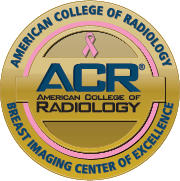
Santa Barbara Women’s Imaging Center is now a Breast Imaging Center of Excellence as designated by the American College of Radiology (ACR).
This designation means Santa Barbara Women’s Imaging Center has achieved accreditation by the ACR in stereotactic breast biopsy, breast ultrasound, and ultrasound-guided breast biopsy, breast MRI and in mammography, and signifies that we provide these essential services to our community at the highest standards of the radiology profession.
Preoperative Wire Localization
Pre-surgical Wire Location procedure is performed in order to identify the location of the abnormality that may not be palpable to assist the surgeon in finding the area to excise. The procedure is performed with mammography or ultrasound guidance. The modality is pre-determined at the time of the pre-operative workup which may have included a mammogram, ultrasound or needle biopsy.
Types of Biopsy:
- PRE-BIOPSY: For all biopsy procedures it is preferable to be off aspirin and other “blood thinner” medications and supplements for 5 to 7 days beforehand. This includes aspirin, Excedrin, Advil, Plavix, Naprosyn, Motrin, extra doses of Vitamin E, Ginko, Fish Oil and many herbal products. Consult your physician before changing your routine.
- FINE NEEDLE ASPIRATION BIOPSY: Using local anesthesia a very thin needle is used to extract cells, the material is mounted on slides or preserved in special fluid, and the samples sent to a laboratory for review by a pathologist. Also called cytology, this technique can be done on lumps by manual technique or image-guided. This test is about 75 – 80 % reliable.
- CORE NEEDLE BIOPSY: Using local anesthesia and ultrasound or MRI guidance, a large bore needle is used to remove small shavings of tissue, which are sent to the laboratory in fluid for a pathologist to examine. A small skin nick (about 1/8th inch) is made in the skin and bruising is common. This technique is 98% reliable.
- VACUUM ASSISTED CORE NEEDLE BIOPSY: Using local anesthesia and either ultrasound or mammographic guidance a large bore needle is used to remove shavings of tissue. About a 1/4th inch skin incision is needed and almost everyone will experience some bruising. This technique is 99%-100% reliable and can be used to completely remove many masses, even up to an inch in size.
- PRE-OPERATIVE WIRE LOCALIZATION: Using local anesthesia a thin wire or wires are placed through the skin and in or around the lesion to be removed surgically. Also called wire-guided surgery this technique is used for non-palpable lesions, like microcalcifications or lumps that are too deep or too small to be felt or seen during surgery, but need complete removal.
You will need to change into a hospital gown. This is to prevent artifacts appearing on the final images and to comply with safety regulations related to the strong magnetic field.
Guidelines about eating and drinking before an MRI vary between specific exams and facilities. Take food and medications as usual unless your doctor tells you otherwise.
Once you’re comfortable on the MRI table, your technologist will slide it into the magnetic part of the machine and begin the scan. You’ll slide into the scanner more than once. You’ll be able to speak with your technologist during the entire scan. It’s important to lie still and breathe normally. You may want to do your relaxation exercises during your scan.
Your breast(s) will be compressed in order to take pictures. The pictures will help your radiologist find the area they need to biopsy. Once they find the area of your breast to biopsy, your radiologist will give you an injection (shot) of a local anesthetic (medication to make an area numb) into your breast.
After the area is numb, your radiologist will make a small incision (surgical cut) in your breast and insert a thin needle. They’ll remove samples of tissue or cells. The sample will be sent to the Pathology Department to check it for cancer cells.
Your radiologist will leave a small marker at the area of your incision to help your healthcare provider identify the biopsied area. You won’t be able to feel this marker. Your radiologist will then put Steri-Strips (thin pieces of paper tape) over your incision.
Your procedure will take 30 minutes to 1 hour.
After your procedure, you’ll have a mammogram. After your mammogram, your technologist will place a bandage over your Steri-Strips. Your nurse will give you the resource Caring for Yourself After Your Image-Guided Breast Biopsy for instructions on how to care for your biopsy site.
Your radiologist will call you with your biopsy results in 3 to 5 business days (Monday through Friday). They’ll also send a report to your healthcare provider. Your healthcare provider will use the results of your biopsy to help plan your care.
Why might I need a breast biopsy?
- To check a lump or mass that can be felt (is palpable) in the breast.
- To check a problem seen on a mammogram, such as small calcium deposits in breast tissue (microcalcifications) or a fluid-filled mass (cyst)
- To evaluate nipple problems, such as a bloody discharge from the nipple.
- To find out if a breast lump or mass is cancer (malignant) or not cancer (benign)

